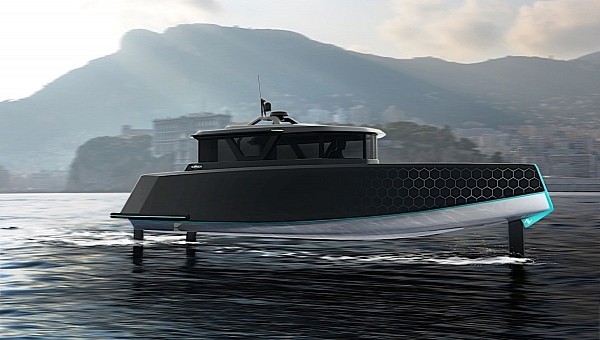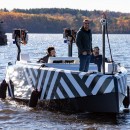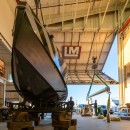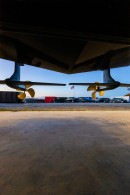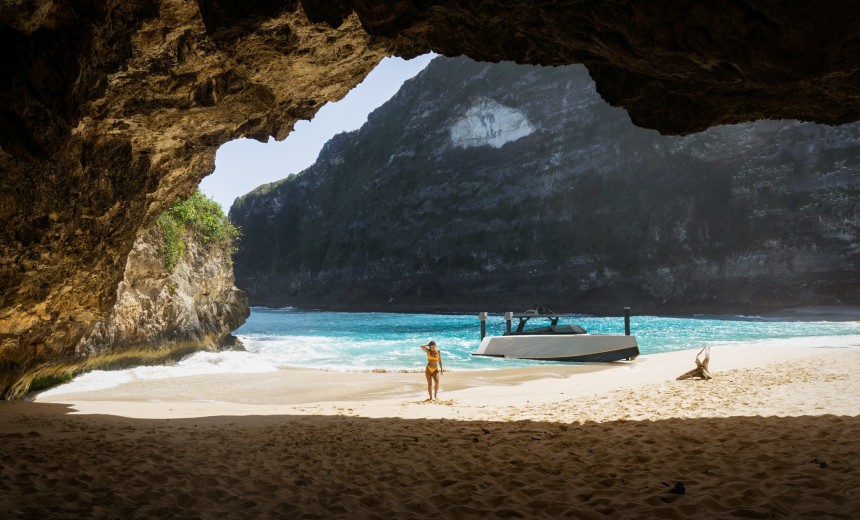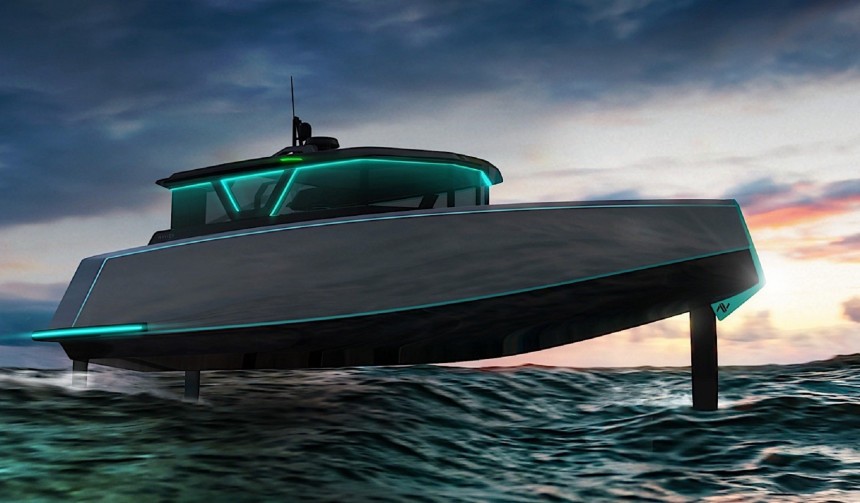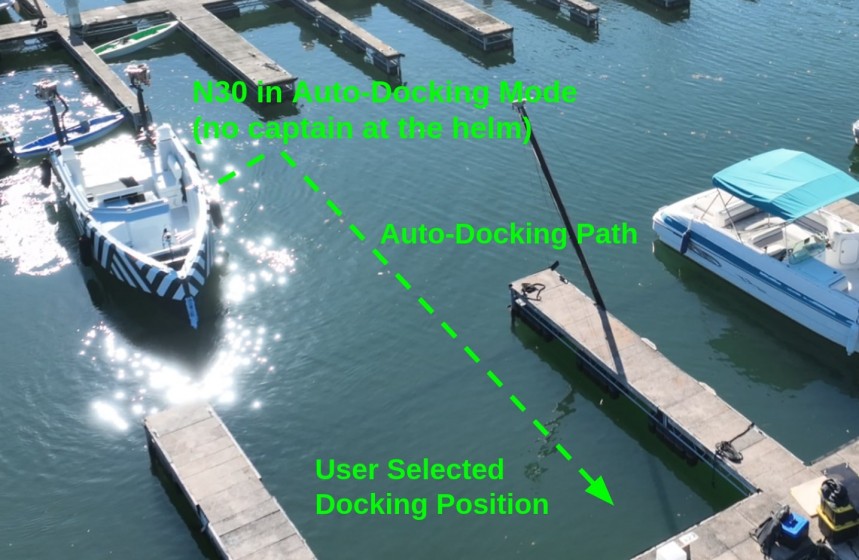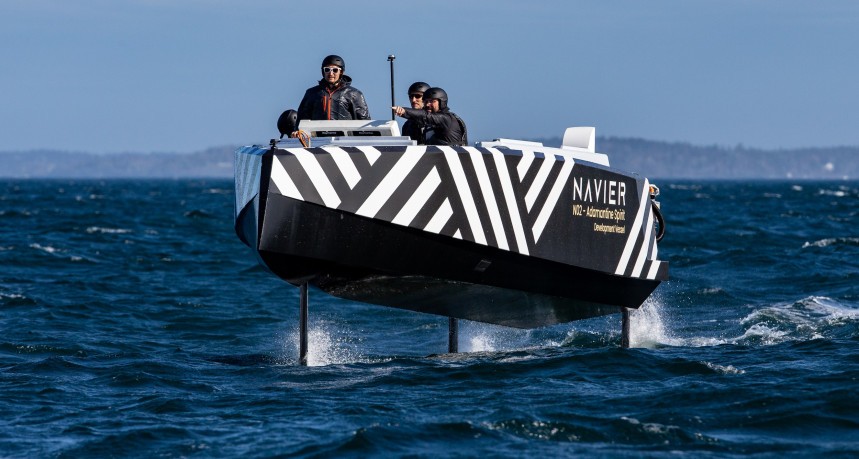The electrification trend has reached many industries, including boating. One of the companies looking to create the boat of the future is Navier. The brand unveiled its 30-ft Electric Hydrofoil project last year and has now announced that an autodocking feature will be added to the 2023 model. Read on to learn more about the groundbreaking vehicle and how this new tool supports Navier's vision.
Headquartered in San Francisco, Navier has an ambitious goal: reimagine the power of movement through innovation and sustainability. The company claims the N30 is the only boat of its kind that went from sketch to flight in under a year – that's truly an impressive feat.
But what did Navier want to change precisely with its new product? First of all, boats typically have a high fuel consumption, which means increased costs for owners. But let's say the budget isn't a problem for you. Then how about polluting the environment? Not only do boats contribute to carbon emissions, but chemicals such as oils, paints, and cleansers can spill into the water and severely impact the ecosystem.
With Navier's all-electric hydrofoil technology, eco-friendliness is at the forefront. And you don't have to sacrifice efficiency either – according to the manufacturer, the N30 "... is 10X more efficient than traditional gas boats..."
Let me tell you about the boat's capabilities – the standard electric drivetrain allows for a max range of 75 miles (121 km) at 20 knots (37 kph). Admittedly, it's not that much, but keep in mind this is just the beginning for the vehicle – Navier will surely take things up a notch as soon as it gets some traction in the boating world.
The secret behind the N30's performance is that its hydrofoil technology enables it to float over 4-foot (1.2-meter) waves. By avoiding contact with the water, speed and range are increased. Long story short, the design resembles an airplane's wings, lifting the boat above water. The N30 can reportedly reach speeds of 35 knots (40 mph or 65 kph).
Another way that Navier stands out from the myriad of boat manufacturers is technology, specifically software – the N30 is equipped with many techy features that make boating worry-free and more accessible for beginners. One example is the autonomous navigation system, which the company claims "will eventually remove labor costs." More information about it will be revealed.
What we do currently know about is the fully autonomous docking feature. This isn't something new in the industry – transportation companies have been working to build such systems for nearly a decade. Even though some companies have managed to integrate it, it usually comes as a pricey option, which keeps it from being mass adopted. Well, Navier is changing the game by offering the feature as standard on its boats.
If you're familiar with technology, you must know that creating a fully autonomous feature of any kind is challenging. Navier has raised over $10M in seed funding from various organizations and individuals, such as the Co-Founder of Google, Sergey Brin, to help them build for the future. The team behind the N30 includes MIT roboticists, marine enthusiasts with aerospace backgrounds, and former GoogleX, Apple, and Uber engineers. They definitely have the credentials to break ground in the maritime industry.
The CEO and Founder of Navier, Sampriti Bhattacharyya, declared that autodocking was the most requested feature of the existing customer base. He added, "Being the first in the industry to deliver this is a huge milestone for the company and the future of the boating experience... Our goal is to bring the joy of sustainable boating to anyone, even those who love water, but are overwhelmed at the thought of handling a boat."
So, how does the system work? It uses advanced computer vision and sensors to estimate the boat's location relative to the selected slip. Then, it calculates external perturbations, such as wind, and identifies the proper course to avoid obstacles. But here's how the N30's system is superior to other typically used ones – its independently steerable twin motors allow for flexible docking maneuvers, such as pure translational and turning movements.
Once the boat reaches its final docking position, the autodocking system keeps it nice and steady as it secures it to the dock. If you don't want to place your trust in software and prefer doing it with your own hands, there's a joystick available for manual docking. The autodocking feature will be available for beta users in the 2023 edition of the N30.
The innovative boat has already proven its capabilities – most recently, it carried ten people and completed the longest-range trip of any electric boat in its class at America's Cup. The sleek, modern design and groundbreaking capabilities make it all set to change the boating game.
The Navier N30 comes in three versions: Opentop, Hardtop, and Cabin. The 2023 model is already sold out. However, you can reserve the 2024 edition for a refundable deposit of $1,000 (€950). Discover more information about the N30 on Navier's official website.
But what did Navier want to change precisely with its new product? First of all, boats typically have a high fuel consumption, which means increased costs for owners. But let's say the budget isn't a problem for you. Then how about polluting the environment? Not only do boats contribute to carbon emissions, but chemicals such as oils, paints, and cleansers can spill into the water and severely impact the ecosystem.
With Navier's all-electric hydrofoil technology, eco-friendliness is at the forefront. And you don't have to sacrifice efficiency either – according to the manufacturer, the N30 "... is 10X more efficient than traditional gas boats..."
The secret behind the N30's performance is that its hydrofoil technology enables it to float over 4-foot (1.2-meter) waves. By avoiding contact with the water, speed and range are increased. Long story short, the design resembles an airplane's wings, lifting the boat above water. The N30 can reportedly reach speeds of 35 knots (40 mph or 65 kph).
Another way that Navier stands out from the myriad of boat manufacturers is technology, specifically software – the N30 is equipped with many techy features that make boating worry-free and more accessible for beginners. One example is the autonomous navigation system, which the company claims "will eventually remove labor costs." More information about it will be revealed.
If you're familiar with technology, you must know that creating a fully autonomous feature of any kind is challenging. Navier has raised over $10M in seed funding from various organizations and individuals, such as the Co-Founder of Google, Sergey Brin, to help them build for the future. The team behind the N30 includes MIT roboticists, marine enthusiasts with aerospace backgrounds, and former GoogleX, Apple, and Uber engineers. They definitely have the credentials to break ground in the maritime industry.
The CEO and Founder of Navier, Sampriti Bhattacharyya, declared that autodocking was the most requested feature of the existing customer base. He added, "Being the first in the industry to deliver this is a huge milestone for the company and the future of the boating experience... Our goal is to bring the joy of sustainable boating to anyone, even those who love water, but are overwhelmed at the thought of handling a boat."
Once the boat reaches its final docking position, the autodocking system keeps it nice and steady as it secures it to the dock. If you don't want to place your trust in software and prefer doing it with your own hands, there's a joystick available for manual docking. The autodocking feature will be available for beta users in the 2023 edition of the N30.
The innovative boat has already proven its capabilities – most recently, it carried ten people and completed the longest-range trip of any electric boat in its class at America's Cup. The sleek, modern design and groundbreaking capabilities make it all set to change the boating game.
